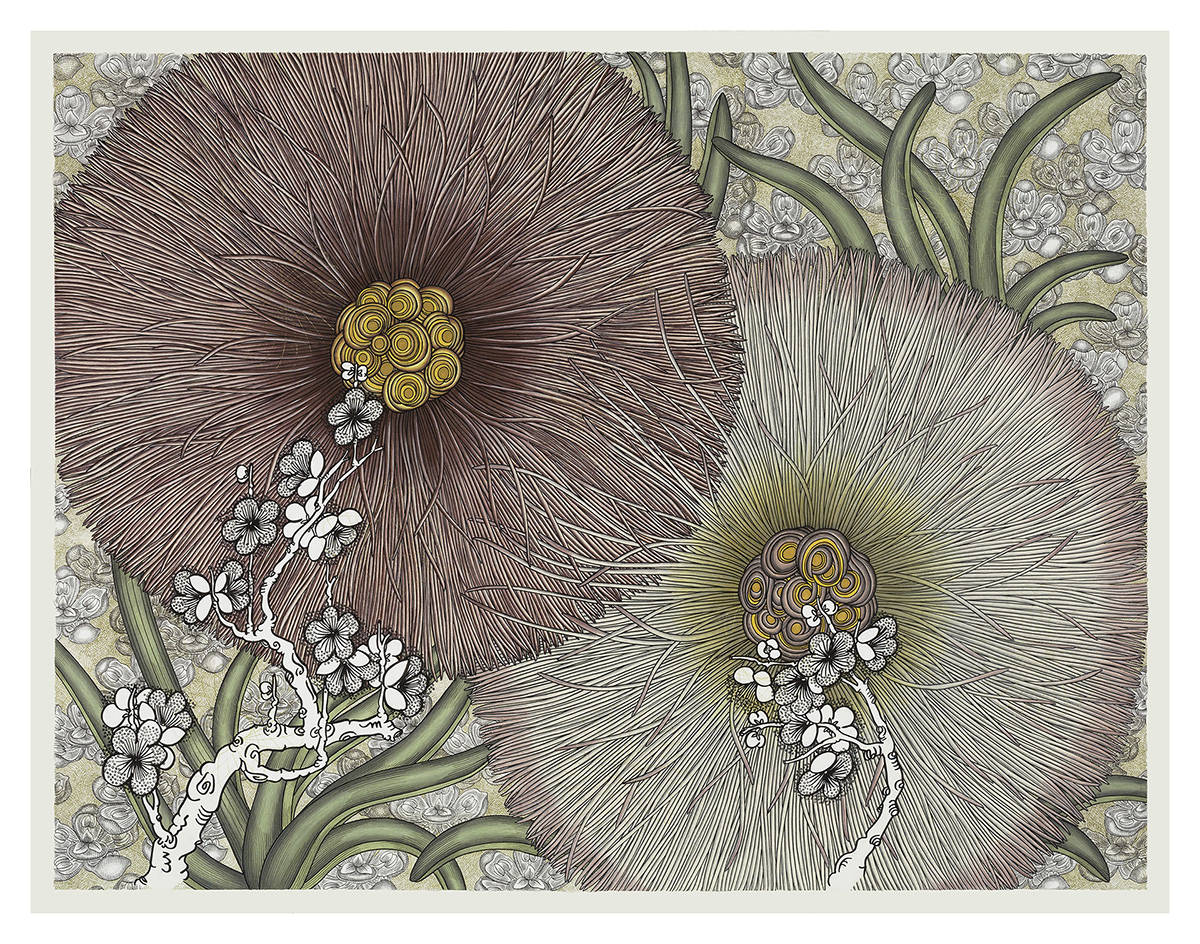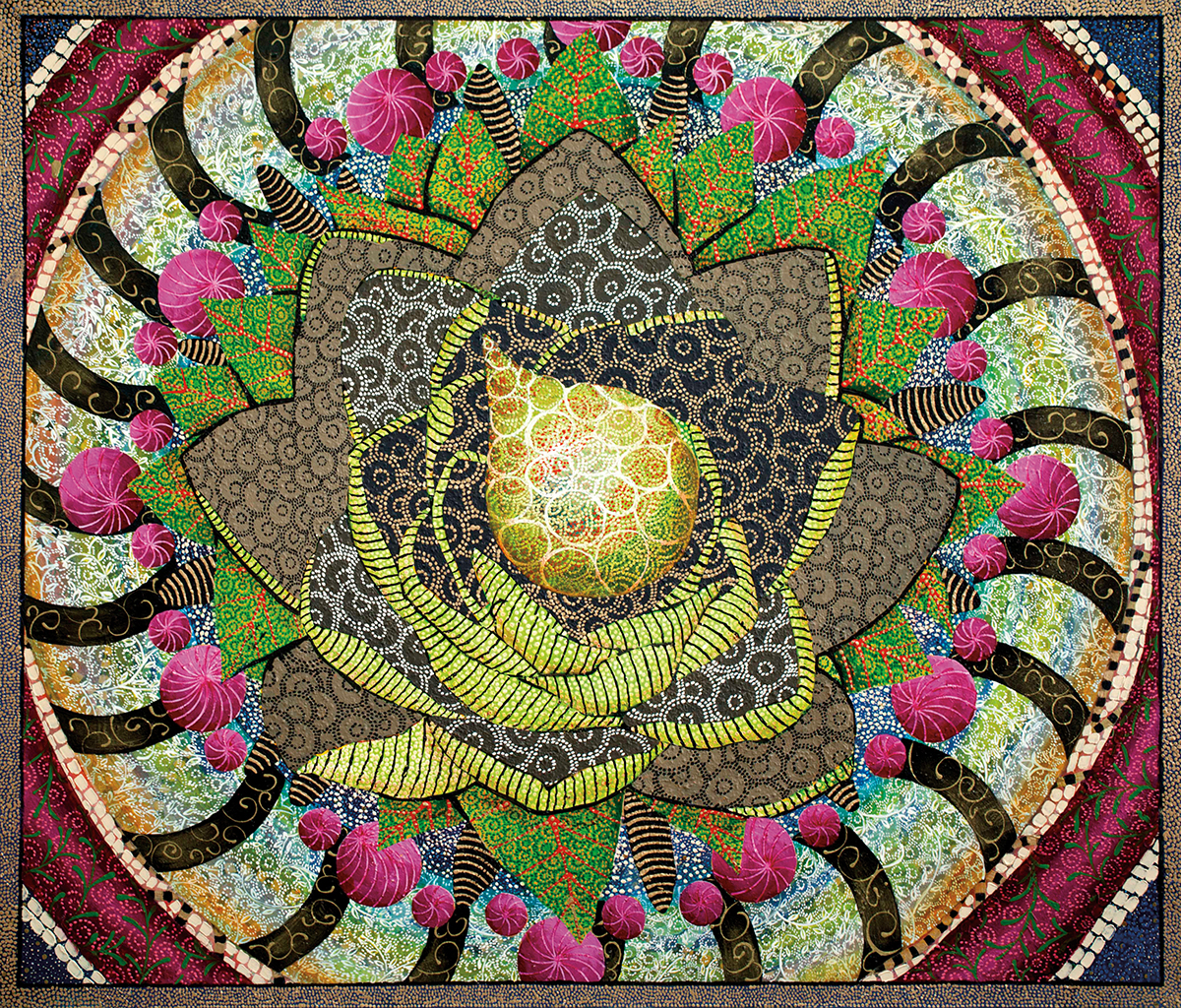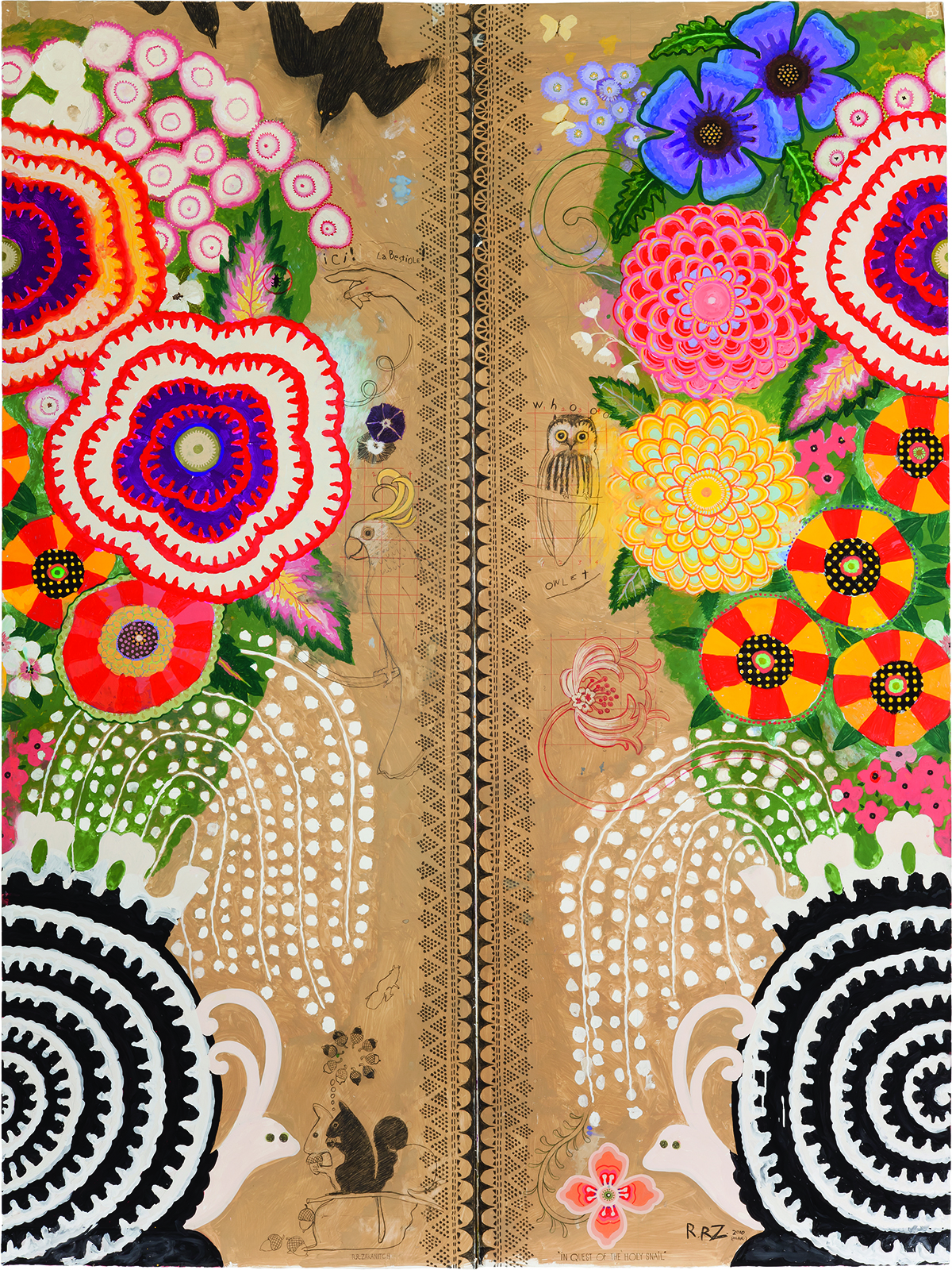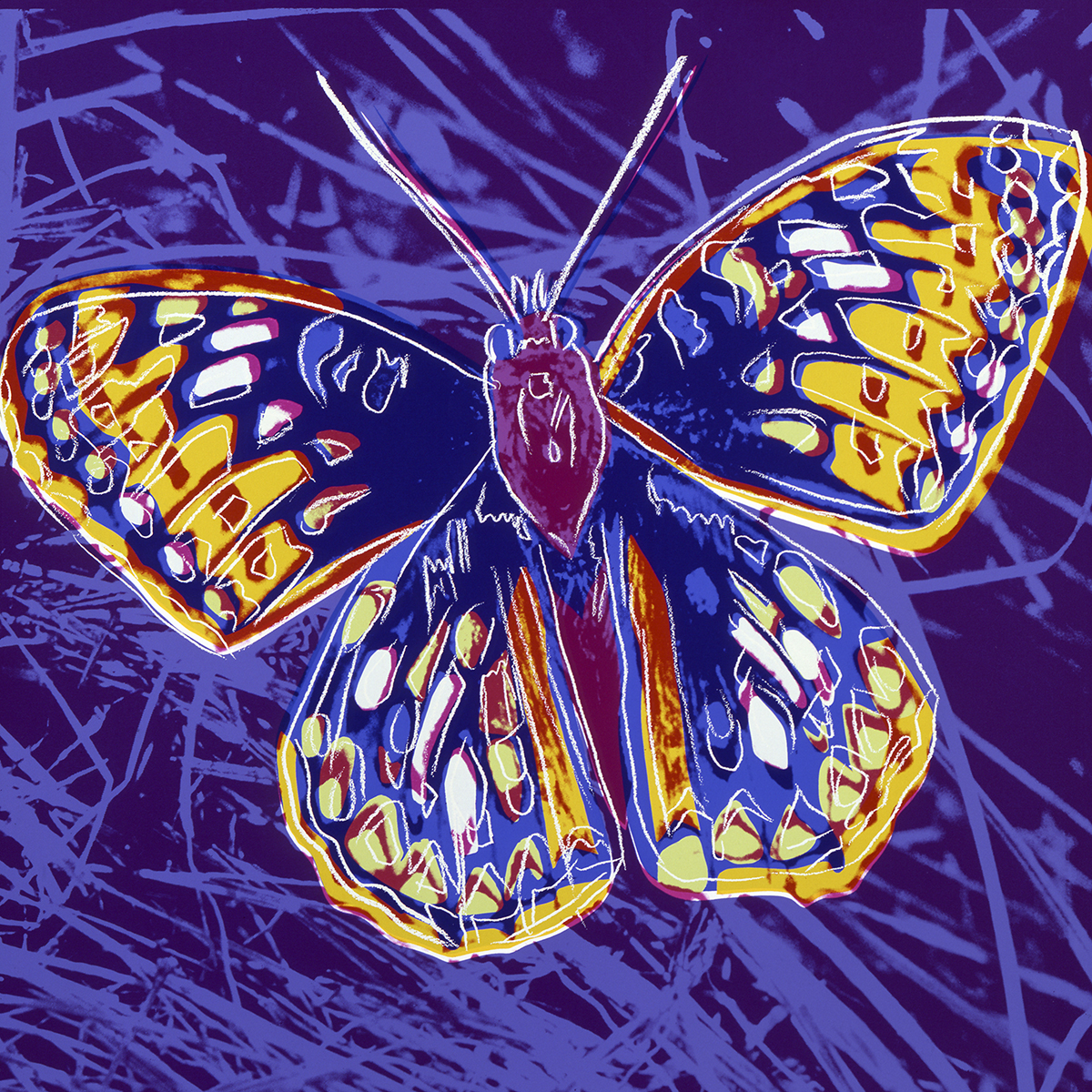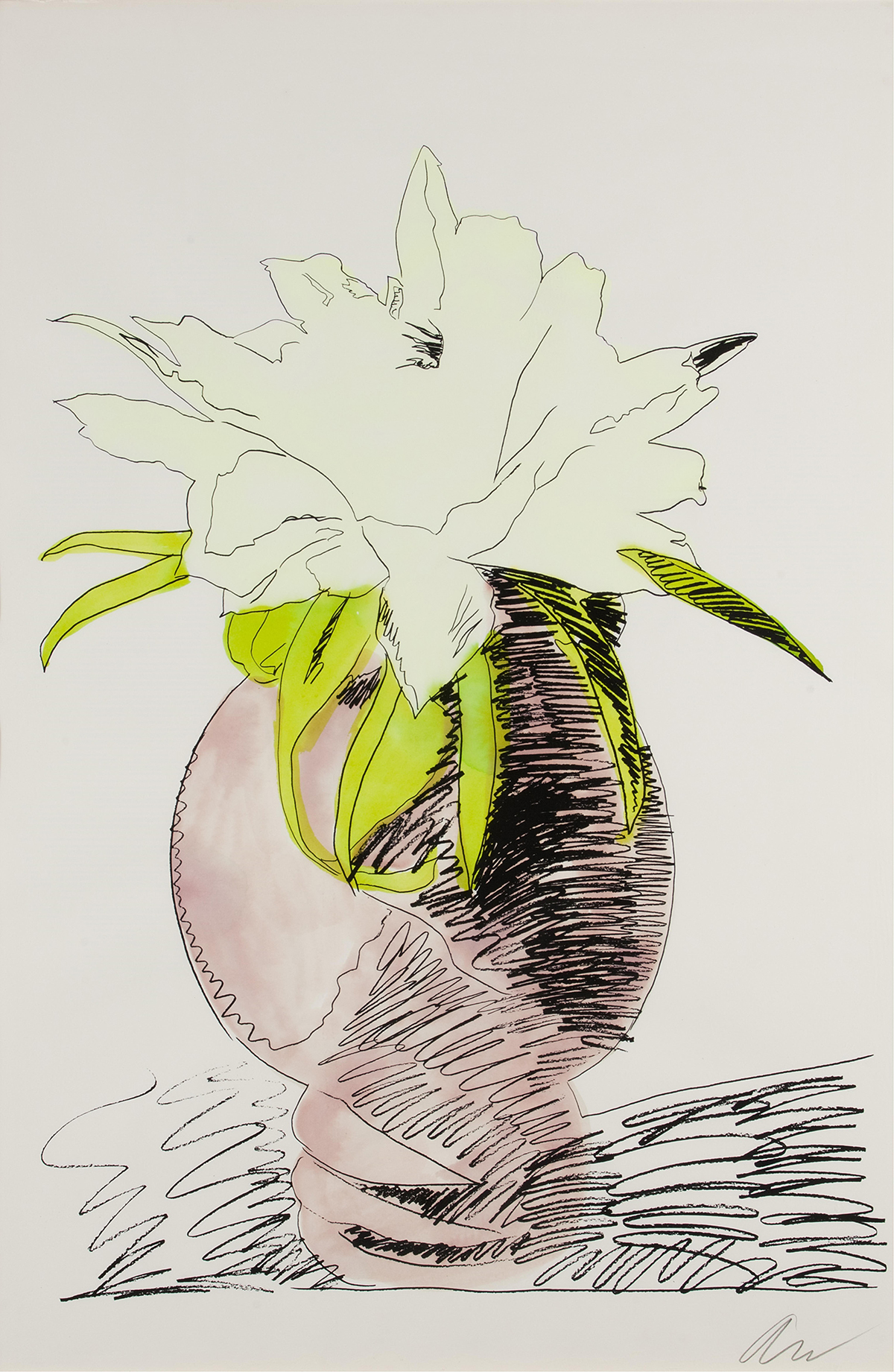
There’s Still Time To Check Out These Late-Summer Floral Exhibits in NYC
There’s still time in Summer ’17 to visit three fantastic floral-inspired exhibits where you can experience a sense of awe and wonder in the Big Apple. When you’re not out enjoying a sweet floral icecream or exploring one of NYC’s hidden gardens, check out these three floral expos to cool off from the summer heat.
Flora Fantastica! at Wave Hill
At the Wave Hill public garden in the Bronx, the gallery in Glyndor House presents “Flora Fantastica!” by four New York-based artists: Nancy Blum, Amy Cheng, Elisabeth Condon, and Jill Parisi. Each artist uses individualized techniques to explore luscious floral patterns and botanical forms.
When you first enter the Glyndor vestibule, Jill Parisi’s immersive installation Bower, 2017 (above) greets you with encircling, imaginary flowers hand cut from loktah, gampi, and mitsumata tissues. “Parisi’s myriad of fantastical hybrid plant forms seem to flutter off the walls,” says Jennifer McGregor, senior curator of the exhibit. The delicate, hanging forms are hand-colored and attached with entomology pins.
Says Parisi of the work: “The process for creating the flora and fauna existing in my imaginary ecosystems can be likened to jazz– I’m riffing on nature, taking colors, structures, et cetera, from a variety of species and places, and reconfiguring them in a new way.”
In contrast, Nancy Blum’s two-dimensional, large-scale drawings use ink, colored pencils, gouache, and graphite to create seductive botanical images combining species that wouldn’t normally exist together.
Her drawing, Harmony (2017, above) suggests the Chinese influences in her work. But Blum’s botanical sources are actually very wide-ranging, from 16th- and 17th-century works to German botanicals and Chinese plum blossoms. Blum, like the other three women artists in the exhibit, also creates larger public commissions, including notable contributions to MTA’s Arts for Transit Program.
Amy Cheng’s oil on canvas floral creations are an elegant feast for the eyes, emphasizing rich colors, pattern, and repetition in designs that have cosmic and textile references. Her work invokes opulent mandalas, intricate cells, lace, brocade, and ancient Middle Eastern motifs. Located in the center gallery, the viewing experience is designed to foster contemplation, as the circular geometry of every painting feels primal and rhythmic.
Compared to Cheng’s work, Elisabeth Condon’s acrylics, made with Chinese ink on linen, seem more realistic and earthy. Incorporating varied patterns (from her mother’s old household wallpaper as well as Chinese imagery,) Condon depicts gardens in different seasons based on drawings made from life in Wave Hill’s greenhouses.
Gardens of Ornament by Robert Zakanitch
Artist Robert Zakanitch, one of the founders of the Pattern and Decoration Movement of the 1970’s, presents his dramatic and witty images on a huge scale. Now at the Hudson River Museum, Gardens of Ornament finds Zakanitch using everyday objects like soup tureens, wallpaper patterns, and drawings of all sorts of charming little animals reminiscent of folk art. There’s a definite “wow factor” to his work, along with a wonderful sense of humor.
“The process for creating the flora and fauna existing in my imaginary ecosystems can be likened to jazz– I’m riffing on nature, taking colors, structures, et cetera, from a variety of species and places, and reconfiguring them in a new way.”
Zakanitch explains of his concepts: “I started doing paintings that were influenced by the linoleum floors I had as a kid– these big roses, and mostly flowers, and all these curlicues. I wanted to go in just the opposite direction of ‘less is more’.”
Using acrylic, watercolor, and gouache, with heavily built-up surfaces, Zakanitch places clever characters in his paintings, like classic author Jane Austen in Ms. Austen Regrets (2007) from his Tureen series, or the ancient Greek poet in Sappho Soup (2006), which features a tureen with gold leaf on the flowers.
In a large, separate gallery space, gigantic, boldly-colored flowers decorate his Hanging Gardens series (2011-12), made with gouache and colored pencil on paper. Each huge painting has a different type of valance design, located at the top, almost like hanging a curtain. Zakanitch points out: “The first piece had to have the sense of hanging– the weight of flowers on the wall. So that’s why there’s always something at the top of each painting, as if all of that is being suspended….”
For his series Garden of Ordinary Miracles (2008), which features iris flowers and various witty wildlife, Zakanitch painted the backgrounds to look like ordinary brown wrapping paper. Each boldly-colored vase of flowers is surrounded by humorous drawings: a swan swims out from “behind” the vase; a bird has a seed in its beak, a spotted rabbit sits in the background, and a song swirls from the mouth of a robin.
Spring Into Summer with Andy Warhol and Friends!
Warhol’s interest in the natural world is a lesser-known side of the iconic pop artist. But according to Kenneth E. Silver, New York University Professor of Modern Art and curator of the “Spring into Summer with Andy Warhol and Friends!” exhibit at the Bruce Museum in Greenwich, Connecticut, Warhol’s Flowers (Hand-Colored) 1974, provides an expanded view of his aesthetic universe. Warhol’s suite of ten silkscreen prints depict floral still lifes in intimate detail, offering a simultaneously realistic and surprisingly intimate portrayal of Warhol’s perspective on the natural world.
Besides these flower images, the museum also presents Warhol’s gorgeous silkscreen images of Endangered Species (1983), including ten animal portraits in bold pop art colors. One of these is the San Francisco Silverspot butterfly, a work commissioned by his his friend and publisher Ron Feldman and his wife Freyda in order to “raise environmental consciousness.”
At the time of the work’s inception, the Silverspot– so named for silver markings on the underside of its wings– had declined due to loss of habitat around Bay Area cities. Like some other butterfly species, the Silverspot relies on just one species of native plant– the field pansy, aka Johnny Jump-up (Viola bicolor)– as a host.
Warhol’s much earlier and imminently recognizable 1964 series Flowers (which is not in this exhibit), was notorious at the time because it was the subject of a highly-publicized lawsuit. (Read our previous coverage on The Story Behind Andy Warhol’s ‘Flowers’, here.) These earlier flower images were inspired by a photograph of hibiscus blooms taken by Patricia Caulfield, then the Executive Editor of Modern Photography Magazine. She sued Warhol and they later settled out of court, but the work persisted to become one of Warhol’s most recognizable prints– a legacy that endures to this day.
Flora Fantastica! is at Wave Hill’s Glyndor House until August 27.
Robert Zakanitch: Garden of Ornament is at the Hudson River Museum until September 17.
Spring Into Summer with Andy Warhol and Friends! is at the Bruce Museum until September 3.



























